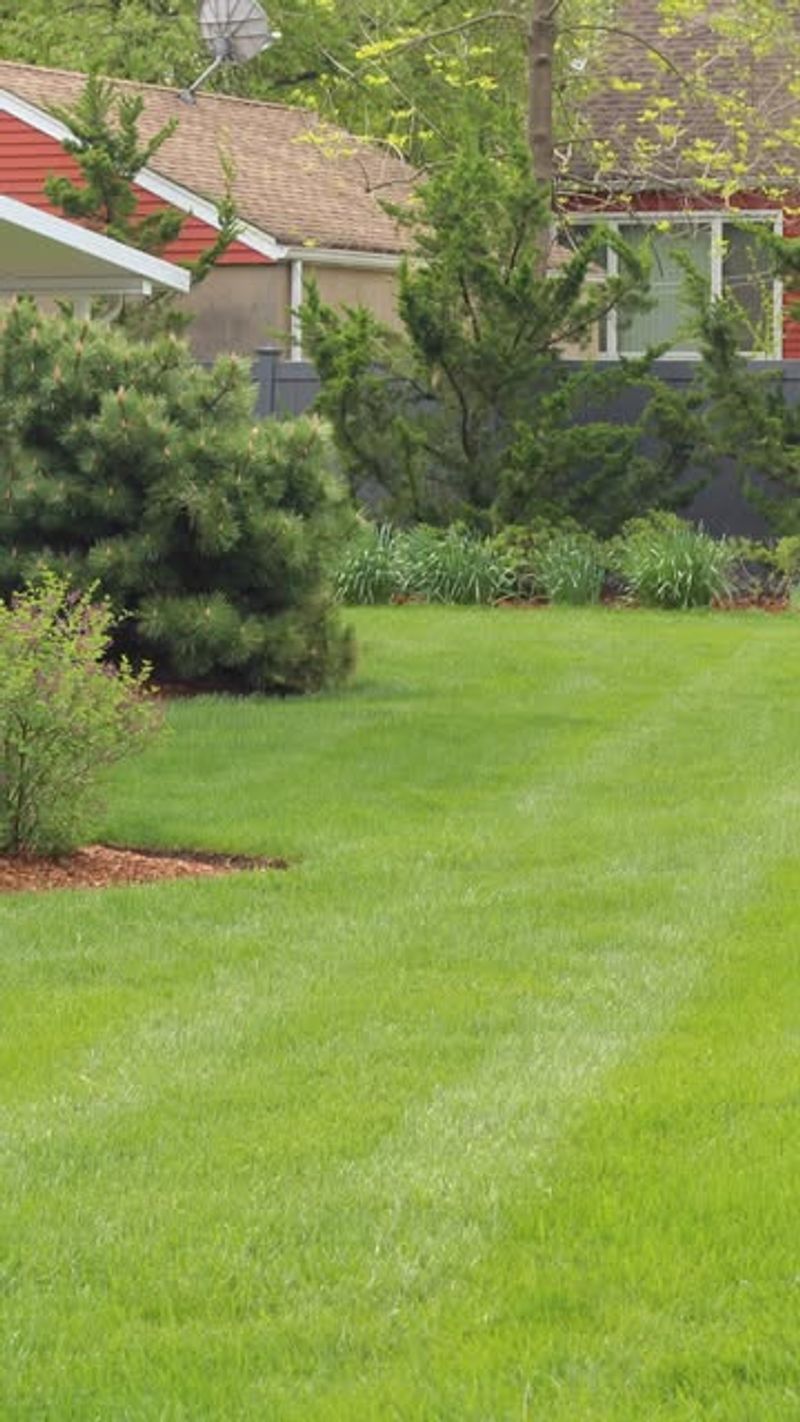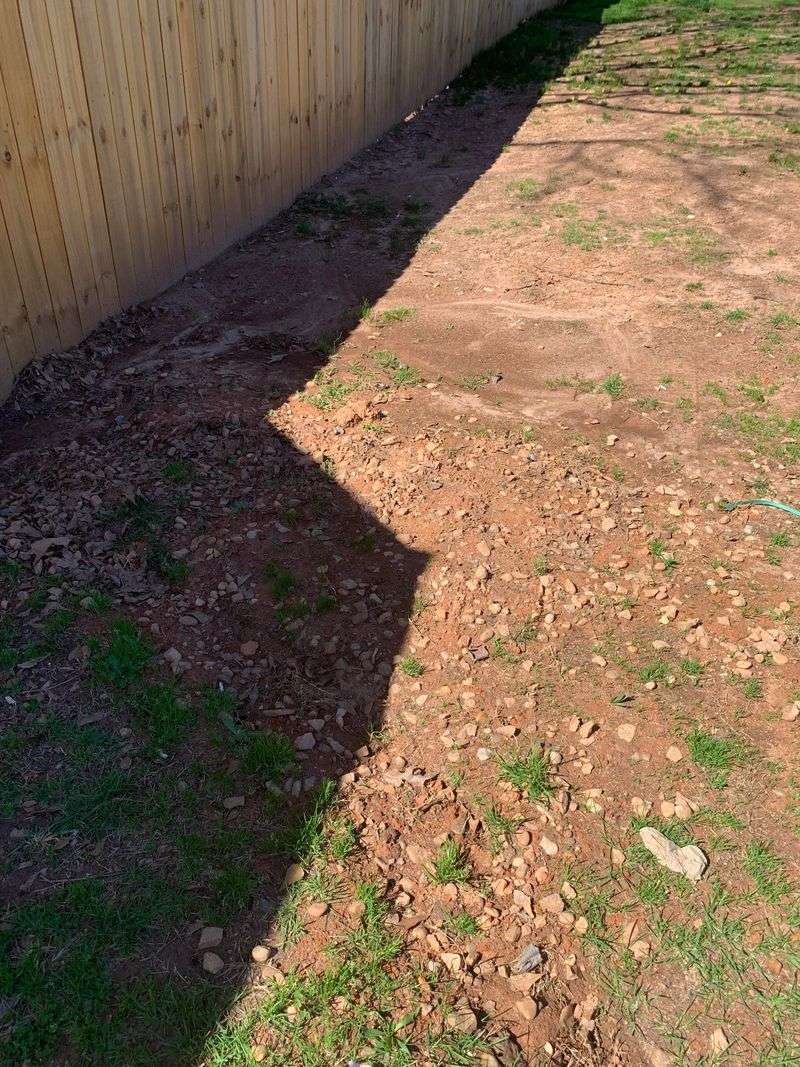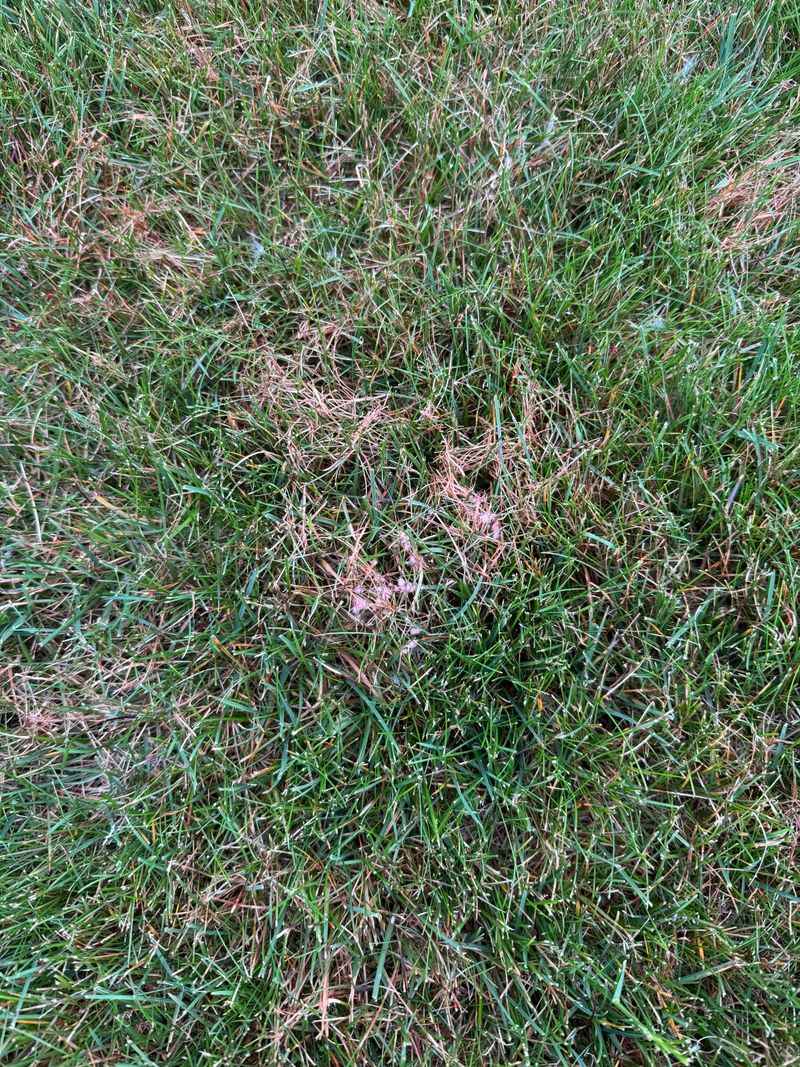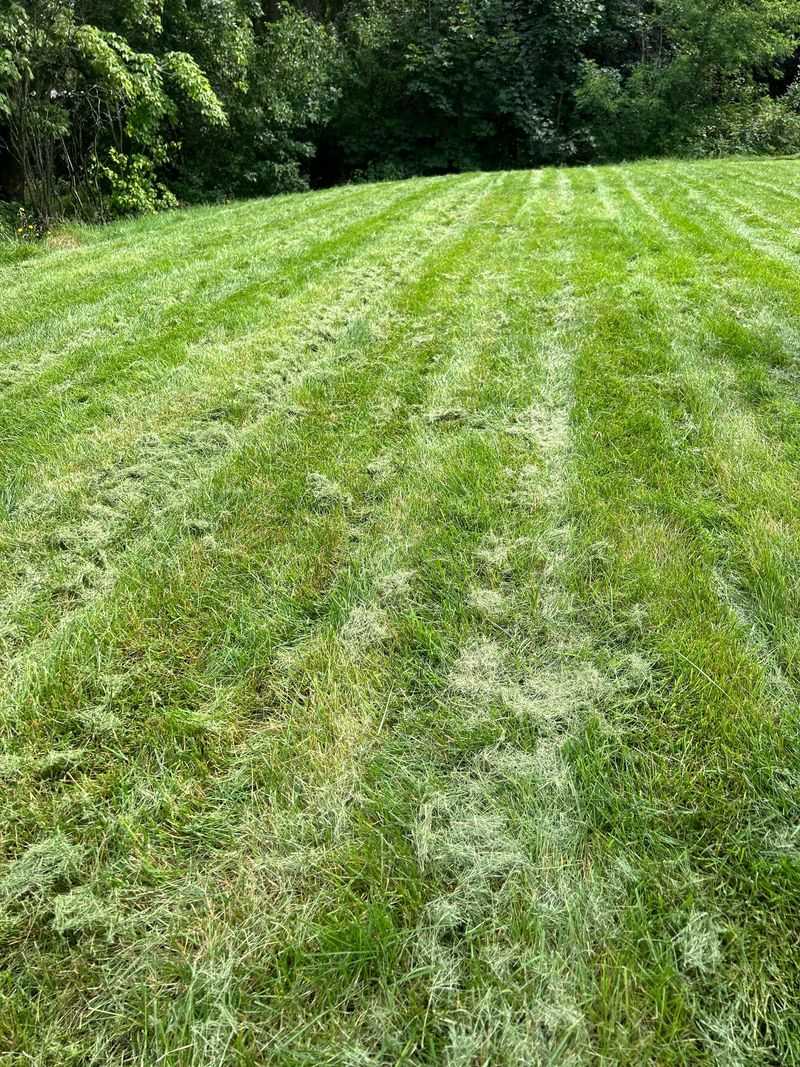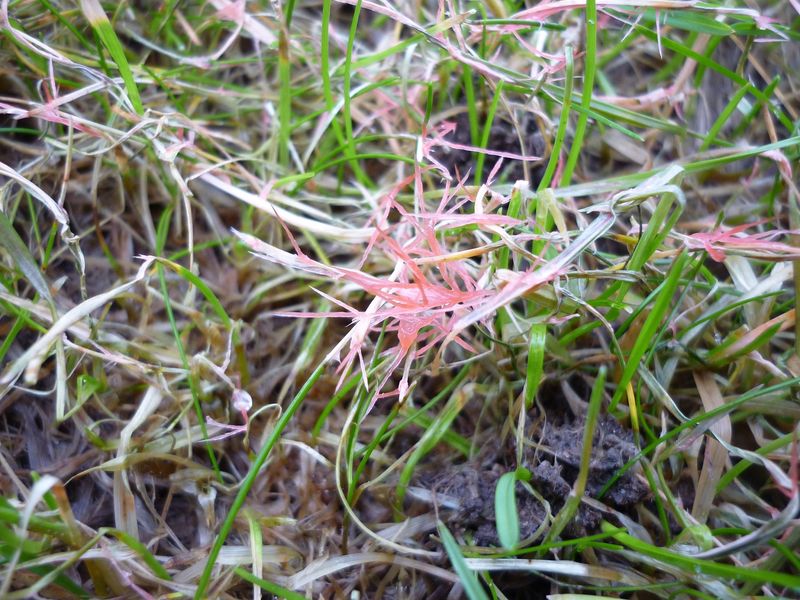If your lawn is suddenly streaked with pink or reddish patches, red thread disease may be to blame. This common fungal issue thrives in damp, undernourished grass—and left untreated, it can quickly spread and weaken your lawn.
Here are 10 reasons red thread is showing up in your yard—and the fast, effective fixes to stop it in its tracks.
1. Nitrogen-Starved Soil Creates Perfect Conditions
Low nitrogen levels in your soil practically roll out the welcome mat for red thread fungus. When grass lacks proper nutrition, its natural defenses weaken, making it easy prey for fungal spores.
A simple soil test can reveal if your lawn is nitrogen-deficient. Most garden centers sell affordable testing kits that provide results in minutes.
Combat this issue by applying a nitrogen-rich fertilizer according to package directions. Spring and fall applications often yield the best results for long-term red thread prevention.
2. Excessive Moisture Fuels Fungal Growth
Red thread thrives in damp conditions, turning morning dew and frequent rain into growth opportunities. Those pink-reddish threads you see are actually the fungus spreading across your grass blades in search of new territory.
Adjust your watering schedule to allow the lawn surface to dry completely between sessions. Early morning watering gives grass time to dry before nightfall.
Consider improving drainage by aerating compacted soil areas. This simple step allows excess moisture to penetrate deeper instead of pooling on the surface where fungus can access it.
3. Compacted Soil Prevents Healthy Root Systems
Grass roots struggle to grow properly in hard, compacted soil. Without strong roots, your lawn can’t access nutrients needed to fight off red thread infection.
Walking across the same lawn paths or heavy equipment use creates dense soil that water can’t penetrate. Roots become shallow and weak in these conditions.
Rent a core aerator from your local garden center and use it once or twice yearly. This machine pulls small plugs of soil from your lawn, creating space for roots to expand and breathe while improving drainage.
4. Cool, Cloudy Weather Creates Ideal Growing Conditions
Red thread fungus throws a party when temperatures hover between 65-75°F with high humidity. Spring and fall often create perfect storm conditions for rapid spread across your lawn.
During these prime red thread seasons, inspect your lawn weekly for early signs of infection. Look for pinkish patches that might appear before the distinctive thread-like structures form.
While you can’t control the weather, you can apply preventative fungicides before high-risk periods begin. Timing applications before symptoms appear works better than treating an established infection.
5. Poor Air Circulation Traps Humidity
Dense, overgrown grass creates a humid microclimate where fungal spores thrive. Areas surrounded by buildings, fences, or thick vegetation often suffer worst because air can’t flow freely to dry the grass.
Regular mowing helps improve air circulation at ground level. Keep grass at the recommended height for your specific variety – usually between 2.5-3.5 inches for most common lawn types.
Consider thinning nearby shrubs or pruning low-hanging tree branches that block sunlight and air movement. Even small improvements in circulation can significantly reduce red thread risk.
6. Acidic Soil pH Encourages Fungal Development
Red thread absolutely loves acidic soil conditions. When your soil pH drops below 6.0, you’re essentially creating a fungus-friendly environment while making it harder for grass to thrive.
Garden lime offers an effective solution for neutralizing acidic soil. Apply according to soil test recommendations, typically at rates of 40-50 pounds per 1,000 square feet for moderately acidic lawns.
Results aren’t immediate – lime takes several months to fully adjust pH levels. Plan applications for fall to see benefits by spring when red thread typically becomes active.
7. Grass Varieties With Poor Disease Resistance
Some grass types practically invite red thread to dinner. Fescues and ryegrasses often show the highest susceptibility, while Kentucky bluegrass typically resists infection better.
For chronically infected lawns, consider overseeding with resistant varieties. Fall provides the ideal time for this project, as soil remains warm while air temperatures cool – perfect for seed germination.
Don’t completely replace your lawn unless damage is severe. Instead, gradually introduce resistant seed during annual maintenance, allowing it to naturally increase its percentage in your lawn over several seasons.
8. Improper Mowing Practices Stress Grass Plants
Scalping your lawn by cutting too short stresses grass plants and invites red thread invasion. Removing more than one-third of the blade length at once forces plants to focus energy on blade regrowth rather than root development.
Dull mower blades tear grass instead of cleanly cutting it. These ragged edges create entry points for fungal spores while slowing healing time.
Sharpen mower blades at least twice per season and adjust cutting height according to grass type. Most cool-season grasses prefer being maintained at 2.5-3.5 inches tall during red thread season.
9. Thatch Buildup Creates Fungal Breeding Ground
Excessive thatch – that layer of dead grass between living blades and soil – becomes a red thread breeding paradise when thicker than ½ inch. This organic matter holds moisture against grass blades while blocking water, air, and nutrients from reaching roots.
Check thatch thickness by removing a small wedge of lawn with a trowel. The brown layer between green grass and soil is your thatch.
Use a dethatching rake or power dethatcher when buildup exceeds ½ inch. Follow with aeration and overseeding to fill thin areas and strengthen your lawn against future red thread attacks.
10. Fungicide Resistance From Improper Treatment
Repeatedly using the same fungicide creates resistant strains of red thread that become increasingly difficult to control. Many homeowners make this mistake by grabbing whatever product worked last time without rotating active ingredients.
Fungicides containing different chemical classes should be alternated throughout the season. Look for products with ingredients like azoxystrobin, propiconazole, or thiophanate-methyl, and avoid using the same class consecutively.
Always follow label directions precisely – applying too little won’t solve the problem, while too much wastes money and can harm beneficial soil organisms that naturally help fight fungal diseases.


